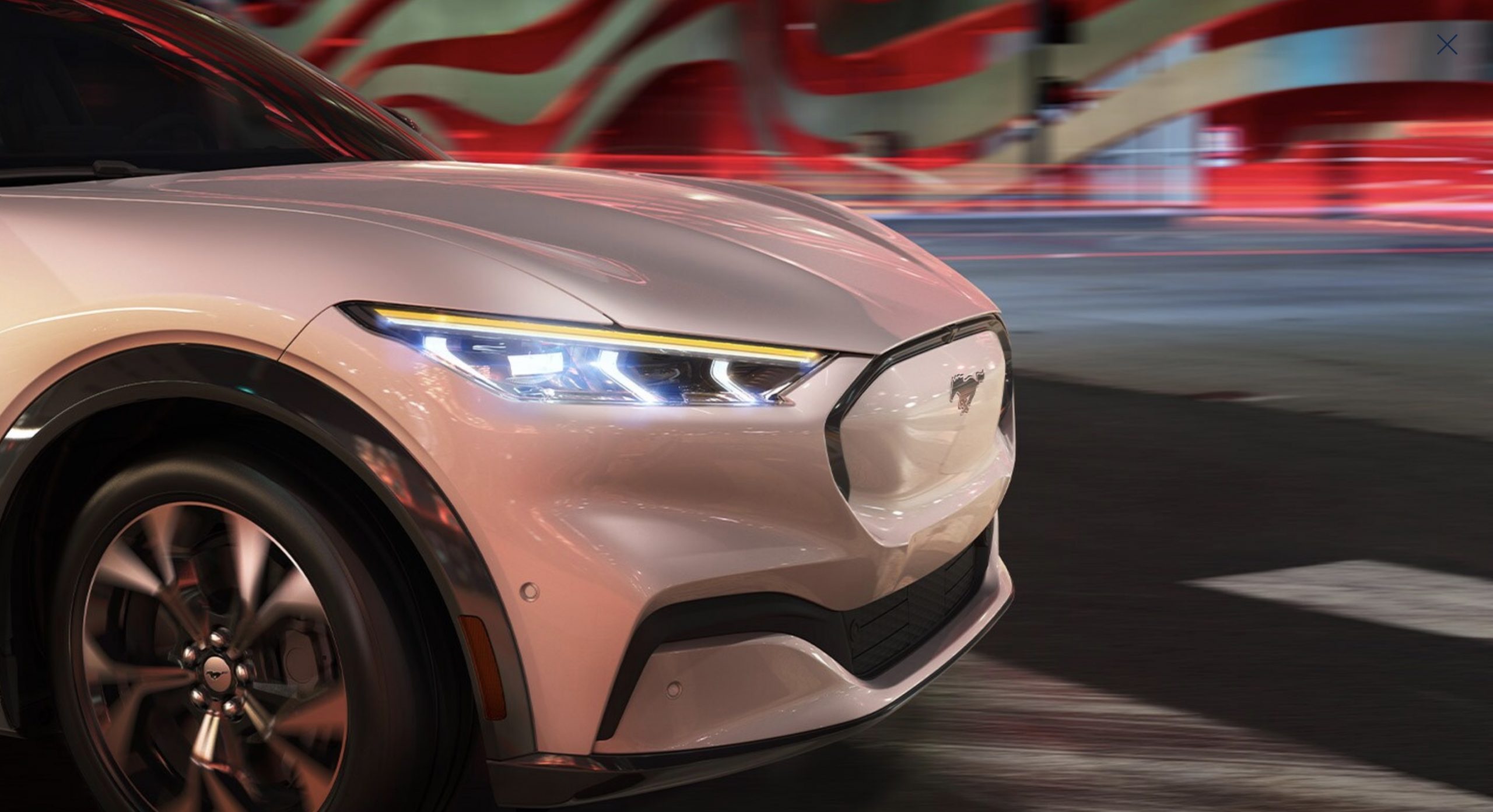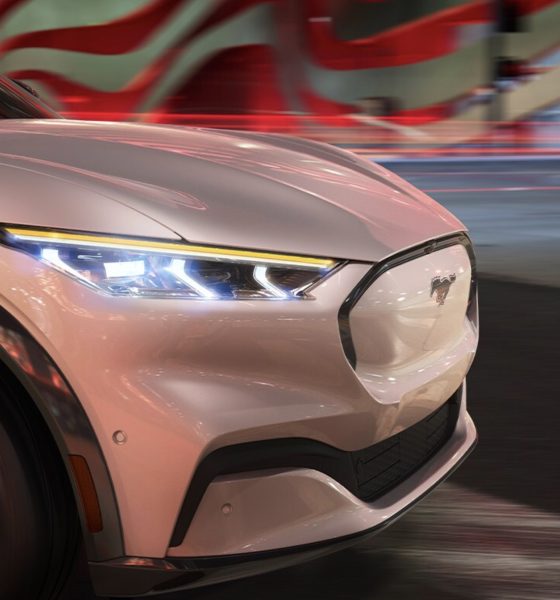Upon the release of the Mustang Mach-E earlier this year, Ford fans can officially call themselves members of the electric vehicle community. The legacy automaker attached a legendary name to their newest technology and introductory electric vehicle. While the Mach-E has received some mixed reviews in its early months of ownership, it has been a relatively well-received vehicle. However, Ford still operates with dealerships, which is a big turn-off for many car buyers, and for a good reason. One Mach-E owner was excited to pick up his new EV until a $10,000 addition to the taxes and fees summary, labeled as a “Document Fee,” almost stopped the delivery of the car. However, it turned out to be a big misunderstanding and only ended up being a glitch on the Ford website.
The post was published by u/Gonzotiki on Friday evening. Titled, “Apparently our local Ford dealer thinks it’s okay to add $10K in doc fees on the Mach e we ordered,” the additional $10,000 was an addition to the nearly $6,000 in taxes, roughly $700 in License/Title/Registration Fees, and just over $200 in other taxes and fees. A whopping $16,837.99 was set to be due when the purchase agreement was signed.
u/Gonzotiki said his vehicle was a pre-order, and he was aware of “a Ford exec that said to hit him up if dealers attempted shenanigans.” That was precisely his plan, an attempt to free him of an already painful car buying process.
Instead, the future Mach-E owner opted to head to the local dealer to talk about the excessive fee, and it turned out to be good news for them.
“UPDATE! It was a website glitch!! Whew. We’re paying MSRP plus tax. And we’re getting a CA Clean Fuel Reward rebate of $1500. Sorry to disappoint! No shenanigans-it’s been remarkably smooth,” u/Gonzotiki added just three hours after the initial post.
Some might ask what exactly a Doc Fee will cover. According to Autolist, the doc fee is “charged by a dealership to process the paperwork related to a vehicle that has been sold. Primarily, the doc fee is used to cover all the expenses associated with the back-office employees at the dealership mentioned above.”
Essentially, doc fees are up to the dealership, and considering many of these establishments will hide fees behind interesting and often unnoticeable titles, they can tend to get expensive, adding thousands to the cost of a vehicle. Luckily, many states have been able to set limits on the doc fees that dealerships can charge. The highest doc fee limit is in Florida, where dealerships can charge up to $607. The lowest is California, charging only $55 for the fee.
The car buying process is one of the most frustrating and stressful times in an adult’s life. A study from Beepi in 2016 found that 87% of American adults dislike something about the process of purchasing a vehicle at a traditional car dealership. 24% of the people who participated in the survey said they would rather get a root canal than buy a car. Furthermore, 61% of Americans feel like they’re taken advantage of at least some of the time when shopping at a car dealership, and 52% of Americans feel anxious or uncomfortable when visiting a car dealership.
Don’t hesitate to contact us with tips! Email us at tips@teslarati.com, or you can email me directly at joey@teslarati.com.

News
Tesla FSD fleet is nearing 7 billion total miles, including 2.5 billion city miles
As can be seen on Tesla’s official FSD webpage, vehicles equipped with the system have now navigated over 6.99 billion miles.

Tesla’s Full Self-Driving (Supervised) fleet is closing in on almost 7 billion total miles driven, as per data posted by the company on its official FSD webpage.
These figures hint at the massive scale of data fueling Tesla’s rapid FSD improvements, which have been quite notable as of late.
FSD mileage milestones
As can be seen on Tesla’s official FSD webpage, vehicles equipped with the system have now navigated over 6.99 billion miles. Tesla owner and avid FSD tester Whole Mars Catalog also shared a screenshot indicating that from the nearly 7 billion miles traveled by the FSD fleet, more than 2.5 billion miles were driven inside cities.
City miles are particularly valuable for complex urban scenarios like unprotected turns, pedestrian interactions, and traffic lights. This is also the difference-maker for FSD, as only complex solutions, such as Waymo’s self-driving taxis, operate similarly on inner-city streets. And even then, incidents such as the San Francisco blackouts have proven challenging for sensor-rich vehicles like Waymos.
Tesla’s data edge
Tesla has a number of advantages in the autonomous vehicle sector, one of which is the size of its fleet and the number of vehicles training FSD on real-world roads. Tesla’s nearly 7 billion FSD miles then allow the company to roll out updates that make its vehicles behave like they are being driven by experienced drivers, even if they are operating on their own.
So notable are Tesla’s improvements to FSD that NVIDIA Director of Robotics Jim Fan, after experiencing FSD v14, noted that the system is the first AI that passes what he described as a “Physical Turing Test.”
“Despite knowing exactly how robot learning works, I still find it magical watching the steering wheel turn by itself. First it feels surreal, next it becomes routine. Then, like the smartphone, taking it away actively hurts. This is how humanity gets rewired and glued to god-like technologies,” Fan wrote in a post on X.
News
Tesla starts showing how FSD will change lives in Europe
Local officials tested the system on narrow country roads and were impressed by FSD’s smooth, human-like driving, with some calling the service a game-changer for everyday life in areas that are far from urban centers.

Tesla has launched Europe’s first public shuttle service using Full Self-Driving (Supervised) in the rural Eifelkreis Bitburg-Prüm region of Germany, demonstrating how the technology can restore independence and mobility for people who struggle with limited transport options.
Local officials tested the system on narrow country roads and were impressed by FSD’s smooth, human-like driving, with some calling the service a game-changer for everyday life in areas that are far from urban centers.
Officials see real impact on rural residents
Arzfeld Mayor Johannes Kuhl and District Administrator Andreas Kruppert personally tested the Tesla shuttle service. This allowed them to see just how well FSD navigated winding lanes and rural roads confidently. Kruppert said, “Autonomous driving sounds like science fiction to many, but we simply see here that it works totally well in rural regions too.” Kuhl, for his part, also noted that FSD “feels like a very experienced driver.”
The pilot complements the area’s “Citizen Bus” program, which provides on-demand rides for elderly residents who can no longer drive themselves. Tesla Europe shared a video of a demonstration of the service, highlighting how FSD gives people their freedom back, even in places where public transport is not as prevalent.
What the Ministry for Economic Affairs and Transport says
Rhineland-Palatinate’s Minister Daniela Schmitt supported the project, praising the collaboration that made this “first of its kind in Europe” possible. As per the ministry, the rural rollout for the service shows FSD’s potential beyond major cities, and it delivers tangible benefits like grocery runs, doctor visits, and social connections for isolated residents.
“Reliable and flexible mobility is especially vital in rural areas. With the launch of a shuttle service using self-driving vehicles (FSD supervised) by Tesla in the Eifelkreis Bitburg-Prüm, an innovative pilot project is now getting underway that complements local community bus services. It is the first project of its kind in Europe.
“The result is a real gain for rural mobility: greater accessibility, more flexibility and tangible benefits for everyday life. A strong signal for innovation, cooperation and future-oriented mobility beyond urban centers,” the ministry wrote in a LinkedIn post.
News
Tesla China quietly posts Robotaxi-related job listing
Tesla China is currently seeking a Low Voltage Electrical Engineer to work on circuit board design for the company’s autonomous vehicles.

Tesla has posted a new job listing in Shanghai explicitly tied to its Robotaxi program, fueling speculation that the company is preparing to launch its dedicated autonomous ride-hailing service in China.
As noted in the listing, Tesla China is currently seeking a Low Voltage Electrical Engineer to work on circuit board design for the company’s autonomous vehicles.
Robotaxi-specific role
The listing, which was shared on social media platform X by industry watcher @tslaming, suggested that Tesla China is looking to fill the role urgently. The job listing itself specifically mentions that the person hired for the role will be working on the Low Voltage Hardware team, which would design the circuit boards that would serve as the nervous system of the Robotaxi.
Key tasks for the role, as indicated in the job listing, include collaboration with PCB layout, firmware, mechanical, program management, and validation teams, among other responsibilities. The role is based in Shanghai.
China Robotaxi launch
China represents a massive potential market for robotaxis, with its dense urban centers and supportive policies in select cities. Tesla has limited permission to roll out FSD in the country, though despite this, its vehicles have been hailed as among the best in the market when it comes to autonomous features. So far, at least, it appears that China supports Tesla’s FSD and Robotaxi rollout.
This was hinted at in November, when Tesla brought the Cybercab to the 8th China International Import Expo (CIIE) in Shanghai, marking the first time that the autonomous two-seater was brought to the Asia-Pacific region. The vehicle, despite not having a release date in China, received a significant amount of interest among the event’s attendees.










